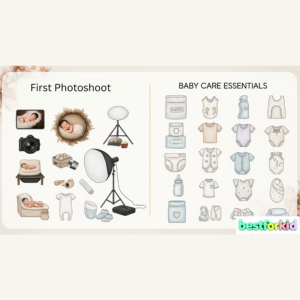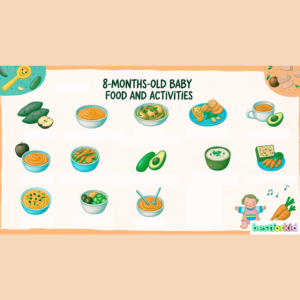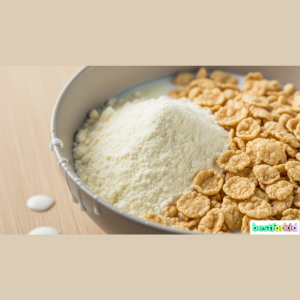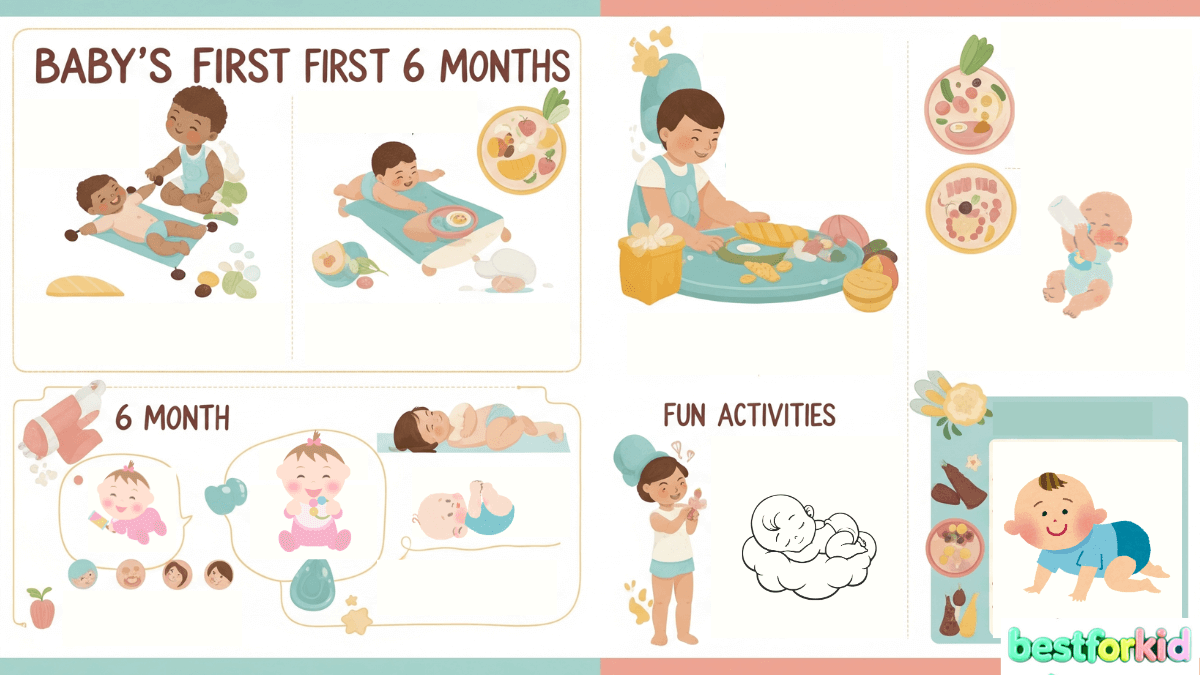
The initial six months of your baby’s life represent a period of rapid growth and development, filled with precious, fleeting moments. For new parents in India, navigating the world of your baby’s first 6 months of food can be both an exciting and overwhelming experience. From understanding the nuances of breastfeeding and formula feeding to introducing the very first solid foods, every step is a significant milestone. This guide is designed to walk you through this beautiful journey, offering practical advice and enjoyable ideas to make these early months a blissful and memorable experience. We will explore everything from the “golden drops” of breast milk to the exciting adventure of starting solids, all within the familiar and comforting context of an Indian household. This comprehensive resource aims to empower you with the knowledge and confidence needed to nourish your baby and foster their development during this critical period.
The Golden Drops: The Unmatched Importance of Breastfeeding (0-6 Months)
For the first six months of life, breast milk is unequivocally the perfect food for your baby. The World Health Organization (WHO) and UNICEF strongly recommend exclusive breastfeeding for this duration. This means providing only breast milk, without any other liquids or solids, not even water. Breast milk is far more than just sustenance; it is a dynamic, living substance that adapts to your baby’s changing needs. It provides the ideal combination of nutrients and is rich in antibodies that protect your baby from common childhood illnesses. Numerous studies have demonstrated that breastfed babies tend to have stronger immune systems and may have a reduced risk of developing allergies and asthma. For mothers, the act of breastfeeding stimulates uterine contractions, aiding in postpartum recovery, and can lower the risk of developing breast and ovarian cancer later in life.
The benefits of breastfeeding extend beyond the initial six months. Research indicates that continued breastfeeding supports your baby’s ongoing growth and development while also reducing the mother’s risk of certain cancers and chronic diseases. Furthermore, breastfeeding fosters a profound emotional bond between mother and child. The intimate skin-to-skin contact provides comfort, security, and a sense of closeness that can contribute to reduced behavioral problems in the future. From a practical standpoint, breast milk is incredibly convenient and cost-effective. It is always readily available at the perfect temperature, making it a reliable source of nutrition, even during emergencies or travel.
How Often Should You Breastfeed?
Newborns require frequent breastfeeding, typically 8 to 12 times within a 24-hour period, which translates to approximately every 2 to 3 hours. This is because their stomachs are very small, and breast milk is easily digested. This frequent nursing also plays a crucial role in establishing and maintaining your milk supply. It is best to practice on-demand feeding, which means nursing your baby whenever they exhibit signs of hunger. These early hunger cues include rooting (turning their head and opening their mouth), sucking on their fists, or general restlessness. Crying is often a late indicator of hunger, so it’s advisable to respond to these earlier signals.
Ensuring a Good Latch
Achieving a good latch is fundamental for effective breastfeeding and for preventing nipple soreness. When your baby latches correctly, their mouth will cover a significant portion of the areola, not just the nipple. Their lips should be turned outwards, resembling a fish’s mouth. You should be able to hear audible swallowing sounds, and the feeding experience should be comfortable for you. If you experience pain during feeding, it is advisable to seek assistance from a lactation consultant or your doctor. A proper latch ensures that your baby is able to efficiently extract milk, which in turn stimulates your milk production, creating a positive and successful breastfeeding experience for both of you.
Common Breastfeeding Challenges
While breastfeeding is a natural process, it is not always without its challenges. Many new mothers experience issues such as sore nipples, concerns about low milk supply, and the discomfort of engorgement or plugged milk ducts. Sore nipples are often a result of an improper latch, and a lactation consultant can provide guidance on correct positioning. Concerns about milk supply are common, but it’s important to remember that most mothers produce the right amount of milk for their baby’s needs. Frequent nursing and ensuring a good latch are key to maintaining a healthy supply. Engorgement, which is the painful swelling of the breasts, can be managed by frequent feeding and applying warm compresses before nursing to encourage milk flow. Plugged ducts, which feel like tender lumps, can be addressed with warm compresses, massage, and continued breastfeeding.
A Healthy Alternative: Understanding Formula Feeding
While breast milk is the recommended standard, there are various reasons why a mother might choose or need to use infant formula. Modern infant formulas are designed to provide complete and adequate nutrition for your baby’s first six months. If you opt for formula feeding, it is crucial to select an iron-fortified formula to support your baby’s growth and development. A variety of formula types are available, including those based on cow’s milk, soy, and specialized formulas for infants with specific medical needs. It is essential to consult with your pediatrician before choosing a formula. They can help you select the most appropriate option for your baby, considering any potential allergies or sensitivities and ensuring they receive the necessary nutrients for healthy development.
How Much Formula Does Your Baby Need?
Similar to breastfed babies, formula-fed newborns should be fed on demand. In the initial days after birth, a newborn may consume between 30-60 ml of formula per feeding, every 2 to 3 hours. As their stomach capacity increases, so will the volume per feeding. By approximately 2 months of age, a baby might drink 120-150 ml every 3 to 4 hours. A general guideline is to offer about 2.5 ounces of formula per pound of body weight each day. However, it is most important to be attuned to your baby’s individual hunger and fullness cues. Signs of fullness include turning their head away from the bottle or falling asleep. Responding to these cues helps to prevent overfeeding and establishes healthy eating patterns from an early age.
Preparing Formula Safely
Strict hygiene is paramount when preparing infant formula to prevent bacterial contamination. Always begin by washing your hands thoroughly with soap and water. All feeding equipment, including bottles, nipples, and rings, must be sterilized before each use. Carefully follow the preparation instructions provided on the formula container, ensuring the correct ratio of water to powder. Using an incorrect concentration can be harmful to your baby. Use water that has been boiled and then cooled to a safe temperature. Prepared formula should be used within two hours if left at room temperature. If refrigerated, it should be used within 24 hours. It is crucial to discard any formula remaining in the bottle after a feeding to prevent the growth of harmful bacteria.
Paced Bottle Feeding
For parents who are bottle-feeding, whether with formula or expressed breast milk, the paced bottle-feeding technique is highly recommended. This method aims to mimic the natural rhythm of breastfeeding, giving the baby more control over the feeding pace. To practice paced feeding, hold your baby in a more upright position and hold the bottle horizontally, with just enough milk to fill the nipple. This allows the baby to suck and swallow at their own pace, taking breaks as needed. Paced feeding can help prevent overfeeding, reduce gas and discomfort, and make it easier for babies to switch between breast and bottle if you are combination feeding.
The Big Milestone: Introducing Solid Foods Around 6 Months
The introduction of solid foods, also known as weaning or complementary feeding, is an exciting and significant milestone in your baby’s development. Both the American Academy of Pediatrics and the WHO recommend starting solids at around 6 months of age. Waiting until this age is important for several reasons. By six months, a baby’s digestive system has matured and is better equipped to handle solid foods. They also have an increased need for certain nutrients, particularly iron and zinc, as the stores they were born with begin to diminish around this time. Introducing solids too early can pose risks such as choking or a reduction in milk intake. This transition is a crucial step in their development and lays the foundation for a lifetime of healthy eating habits.
Signs Your Baby is Ready for Solids
Every baby develops at their own pace, but there are clear developmental signs that indicate a baby is ready to start solid foods. It is important to look for these cues to appear together. Your baby should have good head and neck control and be able to sit upright with support. The tongue-thrust reflex, which causes them to automatically push food out of their mouth, should have diminished or disappeared. They should also show a keen interest in food, such as watching you eat intently or reaching for your food. Good hand-to-mouth coordination is another important indicator. It is a common misconception that chewing on fists is a sign of readiness for solids; this is a normal developmental behavior. Similarly, waking more frequently at night is not necessarily a sign of hunger for solid foods but rather a normal part of infant sleep patterns.
Your Baby's First Foods: An Indian Parent's Guide
The diverse and flavorful world of Indian cuisine offers a wide array of nutritious and appealing first foods for your baby. The key to a successful introduction to solids is to start simple. Introduce new foods one at a time, waiting for 3-4 days before introducing another new food. This systematic approach allows you to closely monitor your baby for any potential allergic reactions and ensures a safe and positive experience. Beginning with familiar tastes can also help ease the transition to solid foods for your baby. The Indian kitchen, with its emphasis on fresh ingredients and gentle spices, is an excellent resource for parents embarking on this exciting journey.
Starting with Single Grains and Pulses
Many Indian families traditionally begin weaning with single-grain cereals and pulses, which are easy to digest and can be prepared to a thin, soupy consistency.
- Homemade Rice Cereal: This can be easily prepared at home by dry roasting rice and grinding it into a fine powder. This powder can then be cooked with water or breast milk to create a smooth, creamy paste.
- Moong Dal Paani (Lentil Soup): Moong dal is known for being light on the stomach and is a good source of protein. To prepare, boil moong dal with a pinch of turmeric, then strain the nutrient-rich water to feed to your baby.
- Ragi (Finger Millet) Porridge: Ragi is a nutritional powerhouse, rich in calcium and iron, making it an excellent choice for supporting the growth of strong bones. Ragi flour can be cooked with water or milk to make a smooth and nourishing porridge.
Fruit and Vegetable Purees
Once your baby is comfortable with single-grain cereals and dals, you can begin to introduce single-ingredient fruit and vegetable purees. Steaming or boiling fruits and vegetables until they are soft makes them easy to mash into a smooth consistency.
First Fruits:
- Mashed Banana: A classic and convenient first food, bananas are packed with potassium.
- Stewed Apple or Pear: These fruits are gentle on a baby’s tummy and easy to digest when cooked.
- Avocado Mash: Creamy in texture and full of healthy fats, avocado is an excellent choice.
- Chickoo (Sapota) Puree: This fruit offers a delicious and fiber-rich option.
First Vegetables:
- Carrot Puree: Naturally sweet and loaded with beta-carotene, carrots are often a favorite.
- Sweet Potato or Pumpkin Puree: These vegetables are smooth, creamy, and easy for a baby to eat.
- Potato Mash: A simple and familiar taste that is easy to prepare.
It is also beneficial to include non-sweet vegetables like broccoli and spinach to help your baby develop a taste for a variety of flavors.
Moving to More Textures
As your baby becomes more accustomed to eating solids, you can gradually introduce thicker and lumpier textures. This progression is important for helping your baby learn to chew and develop their oral motor skills. You can move from smooth purees to mashed foods, and then to soft, well-cooked finger foods. Some babies may even prefer to start with soft finger foods from the beginning, a method known as baby-led weaning. By 8 to 10 months, most babies can manage small pieces of soft fruits, vegetables, and pasta. This gradual increase in texture prepares them for a wider variety of family foods.
Feeding Techniques: Spoon-Feeding and Baby-Led Weaning
There are two primary methods for introducing solid foods to your baby: traditional spoon-feeding and the more contemporary approach of baby-led weaning (BLW). You can choose to follow one method exclusively or adopt a combination of both, depending on what feels right for you and your baby. Both approaches have their own unique benefits, and the best choice is often the one that you are most comfortable with and that suits your baby’s individual temperament and developmental stage. Many parents find that a mixed approach, incorporating both purees and finger foods, is the most effective and enjoyable for everyone involved.
Traditional Spoon-Feeding
This method involves feeding your baby pureed foods with a soft-tipped spoon. Initially, your baby may only consume a teaspoon or two at a time. It is important to go at your baby’s pace and never force them to eat. Wait for them to open their mouth before offering the spoon. Allowing your baby to hold a spoon while you feed them can help them feel more involved in the mealtime process and can aid in the development of their self-feeding skills. Creating a calm, positive, and interactive mealtime environment is key to making eating an enjoyable and stress-free experience for your baby.
Baby-Led Weaning (BLW)
Baby-led weaning is an approach where you offer your baby soft, graspable finger foods from the start, allowing them to feed themselves. This method is excellent for developing fine motor skills and hand-eye coordination. Good first finger foods include soft-cooked vegetable sticks, slices of ripe banana, or soft pear. The food should be cut into pieces that are large enough for your baby to hold in their fist. It is crucial to always supervise your baby closely during mealtimes to prevent choking. It is also important to understand the difference between gagging and choking. Gagging is a normal reflex as your baby learns to manage solid food in their mouth, while choking is a medical emergency.
Gagging vs. Choking
It is vital for parents to distinguish between gagging and choking. Gagging is a natural protective reflex that is very common when babies are learning to eat solids. A gagging baby will be noisy, often coughing or sputtering, and their face may turn red. They are actively trying to move the food forward in their mouth. In contrast, choking is silent because the airway is blocked. A choking baby will be unable to cry or make noise, and their skin may turn blue. Choking is a life-threatening emergency that requires immediate intervention.
From Food to Fun: Play and Development in the First 6 Months
The first six months of a baby’s life are a critical period for both physical and cognitive development. Play is the primary way in which babies learn about the world around them. It stimulates their brain, helps develop their motor skills, and strengthens the bond between you and your child. Providing a variety of age-appropriate play experiences is essential for supporting their growth. Simple, everyday activities can have a profound impact on helping your baby reach important developmental milestones. Remember that every interaction, from talking and singing to gentle play, is a valuable learning opportunity that contributes to their overall development.
Fun Activities for 0-3 Months
During this period, your baby’s vision is still developing, and they are most captivated by faces and high-contrast patterns.
- Tummy Time: This is crucial for strengthening the muscles in their neck, shoulders, and back. Start with short sessions of just a few minutes, several times a day.
- Talking and Singing: The sound of your voice is your baby’s favorite sound. Engaging in conversation and singing to them helps with early language development.
- Mirror Play: Hold your baby in front of a baby-safe mirror. They will be fascinated by their own reflection and your’s.
- Tracking Objects: Slowly move a colorful toy or a high-contrast card in front of your baby’s face to help them practice visual tracking.
Engaging Activities for 4-6 Months
As your baby gains more control over their body, their play will become more interactive and purposeful.
- Reaching and Grasping: Encourage your baby to reach for and grasp soft toys. This helps to develop their hand-eye coordination and fine motor skills.
- Reading Books: It is never too early to start reading to your baby. Choose board books with large, bright pictures and simple text.
- Making Funny Noises: Imitate your baby’s babbles and coos. This back-and-forth “conversation” is an early form of communication.
- Sensory Play: Allow your baby to explore a variety of different textures. You can use soft fabrics, textured balls, or safe household items for them to touch and feel.
Play is a powerful and essential tool for learning. It not only helps to build problem-solving skills and creativity but also fosters social and emotional intelligence, laying the groundwork for a lifetime of learning and discovery.
Conclusion
The first six months of your baby’s life are a remarkable journey of discovery and growth. From the nourishing first drops of breast milk to the exciting first tastes of solid food, every moment is a precious milestone. It is a time to trust your instincts and be attuned to your baby’s individual cues. Whether you choose to breastfeed or use formula, the most important ingredient is love and a nurturing environment. Strive to make mealtimes a happy, relaxed, and positive experience. Embrace the opportunity to introduce your baby to the rich and diverse palette of Indian cuisine. And, amidst the focus on feeding, do not forget the profound importance of play. Engaging in fun and stimulating activities is crucial for your baby’s development and for creating lasting, cherished memories. Cherish these fleeting months of blissful beginnings, as this special time lays a strong and enduring foundation for a healthy and happy life ahead. Enjoy every cuddle, every smile, and every new taste with your little one.
Frequently Asked Questions (FAQ)
When should I start giving my baby water?
For the first six months, breast milk or infant formula provides all the hydration your baby needs. You do not need to give them water during this time. Once you begin introducing solid foods at around six months, you can offer small sips of cooled, boiled water with their meals. This helps them get accustomed to the taste of water and can aid in the digestion of solid foods.
How do I know if my baby is getting enough milk?
A good indicator of whether your baby is getting enough milk is their diaper output. A well-fed baby should have at least 6-8 wet diapers per day. They should also be gaining weight steadily. If you have any concerns about your baby’s intake or weight gain, it is always best to consult your pediatrician. They can track your baby’s growth on a chart and offer personalized guidance on feeding practices.
Can I add salt or sugar to my baby’s food?
No, you should not add salt or sugar to your baby’s food. A baby’s kidneys are not yet mature enough to handle added salt. Added sugar can contribute to tooth decay. Instead, rely on the natural flavors of fruits and vegetables to make food appealing. You can also use mild spices like turmeric or cumin to add flavor without posing any risks to your baby’s health.
What are the signs of a food allergy?
Signs of a food allergy can vary and may include skin reactions such as rashes or hives, swelling of the lips or face, vomiting, diarrhea, or difficulty breathing. If you notice any of these symptoms after introducing a new food, you should stop offering that food and contact your doctor immediately for advice and evaluation.
Is it okay to give my baby honey?
No, it is not safe to give honey to a baby under one year of age. Honey can contain spores of a bacteria called Clostridium botulinum, which can cause a serious illness known as infant botulism. It is best to completely avoid honey until after your baby’s first birthday to eliminate this risk.
When can I introduce common allergenic foods like eggs and peanuts?
Current recommendations suggest that you can introduce common allergenic foods, such as well-cooked eggs and peanut products, at around 6 months of age, along with other solid foods. Introducing these foods early and regularly may help reduce the risk of developing allergies. It is important to introduce them one at a time and in small amounts. If there is a strong family history of allergies, it is advisable to consult with your pediatrician before introducing these foods so they can provide personalized guidance.
You May Also Like

2025’s Best Baby Diapers in India Every Parent Should Know
Finding the right diaper can be a game-changer for both parents and babies. In this guide, we’ve rounded up the best baby diapers in India for 2025 that offer superior comfort, absorbency, and skin protection. Whether you’re looking for budget-friendly options or premium brands, this list helps you make the right choice for your little one’s needs.
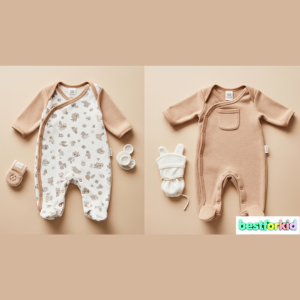
Newborn Clothing Made Easy: Comfort Meets Practicality
Dressing your newborn doesn’t have to be complicated. This guide simplifies your shopping by focusing on clothes that are soft, breathable, and easy to wear. Discover top picks for rompers, onesies, and sleepwear that combine comfort with convenience—perfect for your baby’s delicate skin and your daily routine.
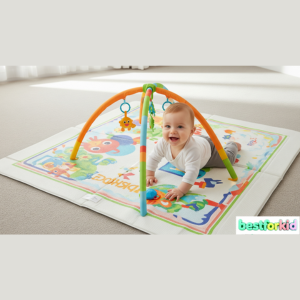
10 Best Baby Play Mats for Comfort, Safety & Entertainment
A good play mat offers more than just a soft surface—it encourages sensory development, tummy time, and safe play. We’ve curated the best baby play mats of 2025 that tick all the boxes: comfort, safety, durability, and design. Explore options that turn your floor into a fun and nurturing environment for your baby.

